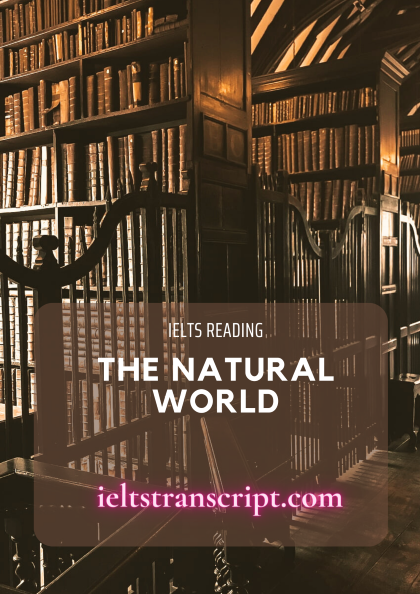- Đối với sản phẩm có giá: Sau khi chúng tôi ghi nhận thông tin đã thanh toán sản phẩm của bạn, sản phẩm sẽ được mở khóa và bạn có thể xem trực tiếp và tải tài liệu sản phẩm.
- Đối với thành viên trả phí: Bạn có thể mua và thanh toán sản phẩm với giá 0đ để tải tài liệu sản phẩm.
- Bạn có thể liên hệ với chúng tôi để được hỗ trợ mở khóa sản phẩm sớm nhất.
THE SPICE OF LIFE!
- Chúng tôi chấp nhận các phương thức thanh toán sau đây: Thẻ tín dụng, thẻ ghi nợ, PayPal, chuyển khoản ngân hàng và tiền mặt.
Chúng tôi sẽ không thu thêm phí cho bất kỳ hình thức thanh toán nào.
- Nếu bạn gặp vấn đề về sản phẩm của chúng tôi trong thời gian sử dụng, vui lòng liên hệ với chúng tôi để được hỗ trợ xử lý sớm nhất nhé.
Xem trước mẫu
The Spice of Life!
A When thinking of the most popular restaurant dish in the UK, the answer ‘chicken tikka masala’ does not spring readily to mind. But it is indeed the answer, often now referred to as a true ‘British national dish’. It may even have been invented by Indian immigrants in Scotland, who roasted chicken chunks (tikka), mixed them with spices and yoghurt, and served this in a bowl of masala sauce. The exact ingredients of the sauce vary from restaurant to restaurant, but the dish usually includes purced tomatoes and cream, coloured orange by turmeric and paprika. British cuisine? Yes, spices have come a long way.
B Spices are dried seeds, fruit, roots, bark, or vegetative parts of plants, added to food in small amounts to enhance flavour or colour. Herbs, in contrast, are only from the leaves, and only used for flavouring. Looking at the sources of some common spices, mustard and black pepper arc from seeds, cinnamon from bark, cloves from dried flower buds, ginger and turmeric from roots, while mace and saffron are from seed covers and stigma tips, respectively. In the face of such variety, it is becoming increasingly common for spices to be offered in pre-made combinations. Chili powder is a blend of chili peppers with other spices, often cumin, oregano, garlic powder, and salt. Mixed spice, which is often used in baking, is a British blend of sweet spices, with cinnamon being the dominant flavour. The ever-popular masala, as noted, could be anything, depending on the chef.
C Although human communities were using spices tens of thousands of years ago, the trade of this commodity only began about 2000 BC, around the Middle Last. Farly uses were less connected with cooking, and more with such diverse functions as embalming, medicine, religion, and food preservation. Eventually, extensive overland trade routes, such as the Silk Road, were established, yet it was maritime advances into India and East Asia which led to the most dramatic growth in commercial activities. From then on, spices were the driving force of the world economy, commanding such high prices that it pitted nation against nation, and became the major impetus to exploration and conquest, It would be hard to underestimate the role spices have played in human history.
D Originally, Muslim traders dominated these routes, seeing spice-laden ships from the Orient crossing the Indian Ocean to Red Sea and Persian Gulf ports, from where camel caravans transported the goods overland. However, although slow to develop, European nations, using aggressive exploration and colonisation strategies, eventually came to rule the Far East and, consequently, control of the spice trade. At first, Portugal was the dominant power, but the British and Dutch eventually gained the upper hand, so that by the 19th century, the British controlled India, while the Dutch had the greater portion of the East Indies (Indonesia). Cloves, nutmeg, and pepper were some of the most valuable spices of the time.
E But why were spices always in such demand? There are many answers. In the early days, they were thought to have strong medicinal properties by balancing ‘humours’, or excesses of emotions in the blood. Other times they were thought to prevent maladies such as the plague, which often saw prices of recommended spices soar. But most obviously, spices flavoured the bland meat-based European cuisines. Pepper, historically, has always been in highest demand for this reason, and even today, peppercorns (dried black pepper kernels) remain, by monetary value, the most widely traded spice in the world. However, saffron, by being produced within the small saffron flower, has always been among the world’s most costly spice by weight, valued mostly for its vivid colour.
F Predictably, the majority of the world’s spices are produced in India, although specific spices arc often
...Gia vị cuộc sống!
A Khi nghĩ đến món ăn nhà hàng được yêu thích nhất ở Vương quốc Anh, “gà tikka masala” hẳn không phải là câu trả lời bạn nghĩ tới. Nhưng đáp án lại chính là món này, vốn được xem là “món ăn quốc dân của Anh” đúng nghĩa ngày nay. Gà tikka masala thậm chí có lẽ đã được những người nhập cư Scotland gốc Ấn Độ nghĩ ra, bằng cách nướng các tảng thịt gà (tikka), trộn với gia vị và sữa chua, và dùng món này trong một bát nước sốt masala. Các nhà hàng sử dụng các công thức nước sốt khác nhau, nhưng đều thường ăn cùng cà chua nghiền và kem, với màu cam của nghệ và ớt bột. Ẩm thực Anh ư? Vâng, câu chuyện về gia vị đã đi được một chặng đường khá dài.
B Gia vị chính là các loại hạt khô, trái cây, rễ, vỏ cây, hoặc các bộ phận sinh dưỡng của thực vật được thêm vào thức ăn với lượng nhỏ để tăng hương vị hoặc màu sắc. Ngược lại, thảo mộc chỉ được chiết xuất từ các loại lá và chỉ được dùng làm hương liệu. Xét đến nguồn gốc của một số loại gia vị thông thường: mù tạt và tiêu đen là từ các loại hạt, quế từ vỏ cây, đinh hương từ nụ hoa khô, gừng và nghệ từ rễ, trong khi nhục đậu khấu từ vỏ hạt và nghệ tây từ đầu nhụy. Trước sự đa dạng như vậy, việc các loại gia vị được sản xuất dưới dạng kết hợp sẵn ngày càng trở nên phổ biến. Ớt bột là sản phẩm pha trộn của ớt với các loại gia vị khác, thường là thì là, rau kinh giới, bột tỏi và muối. Gia vị hỗn hợp, thường được sử dụng trong làm bánh, là một công thức hỗn hợp của Anh bao gồm các loại gia vị ngọt, với quế là hương vị chủ đạo. Như đã nói, nước sốt masala nổi tiếng có thể là bất cứ loại nào tùy thuộc vào đầu bếp.
C Mặc dù các cộng đồng xã hội loài người đã sử dụng gia vị từ hàng chục nghìn năm trước, mặt hàng này chỉ được bắt đầu buôn bán vào khoảng 2000 năm trước Công nguyên, vào khoảng thời Trung Cổ. Trước đây công dụng của gia vị ít có liên quan đến nấu nướng, và thường được dùng đa dạng trong các lĩnh vực khác như ướp xác, y học, tôn giáo và bảo quản thực phẩm. Cuối cùng, các tuyến đường bộ thương mại rộng lớn như Con đường Tơ lụa được thiết lập, nhưng chính những bước tiến hàng hải vào Ấn Độ và Đông Á mới dẫn đến sự tăng trưởng hoạt động thương mại mạnh mẽ. Kể từ đó trở đi, gia vị là động lực của nền kinh tế thế giới, đẩy giá cả cao đến mức gây căng thẳng giữa các quốc gia, trở thành mục đích chính cho các cuộc khai phá và chinh phạt. Khó có thể đánh giá thấp vai trò của gia vị trong lịch sử nhân loại.
D Ban đầu, các thương nhân Hồi giáo thống trị các tuyến đường này, với những con tàu chở đầy gia vị từ Phương Đông băng qua Ấn Độ Dương đến các cảng ở Biển Đỏ và Vịnh Ba Tư, từ đó các đoàn lữ hành lạc đà tiếp tục vận chuyển hàng hóa trên đường bộ. Tuy nhiên, mặc dù chậm phát triển, các quốc gia châu Âu lại sử dụng các chiến lược thăm dò và xâm lược thuộc địa, và cuối cùng đã thống trị vùng Viễn Đông và từ đó kiểm soát hoạt động buôn bán gia vị. Lúc đầu, Bồ Đào Nha là cường quốc thống trị, nhưng cuối cùng người Anh và người Hà Lan đã giành được ưu thế, đến thế kỷ 19, người Anh kiểm soát Ấn Độ, trong khi người Hà Lan chiếm phần lớn hơn của Đông Ấn (Indonesia). Đinh hương, nhục đậu khấu và hạt tiêu là một số loại gia vị có giá trị nhất thời bấy giờ.
E Nhưng tại sao nhu cầu gia vị lại lớn đến vậy? Có rất nhiều câu trả lời. Trong những ngày đầu, gia vị được cho là có đặc tính y học mạnh mẽ với khả năng cân bằng “humours”, hoặc trạng thái cảm xúc thái quá trong máu. Có lúc gia vị lại được cho là có thể ngăn ngừa các bệnh như dịch hạch, từ đó làm tăng mạnh giá các gia vị được khuyên dùng để chữa bệnh này. Nhưng rõ ràng nhất, gia vị đã tạo nên hương vị cho các món ăn từ thịt nhạt nhẽo ở châu Âu. Vì lý do này mà trong lịch sử, giá cả tiêu hạt luôn ở mức cao, và thậm chí ngày nay, peppercorns (hạt tiêu đen khô) vẫn là loại gia vị được giao dịch rộng rãi nhất trên thế giới, tính theo giá trị tiền tệ. Tuy nhiên, do được sản xuất bên trong lòng bông hoa nhỏ, nghệ tây luôn nằm trong số những
...Để xem được đầy đủ nội dung và tải dữ liệu, bạn phải trở thành thành viên của chúng tôi và trả phí cho tài liệu (nếu có)











